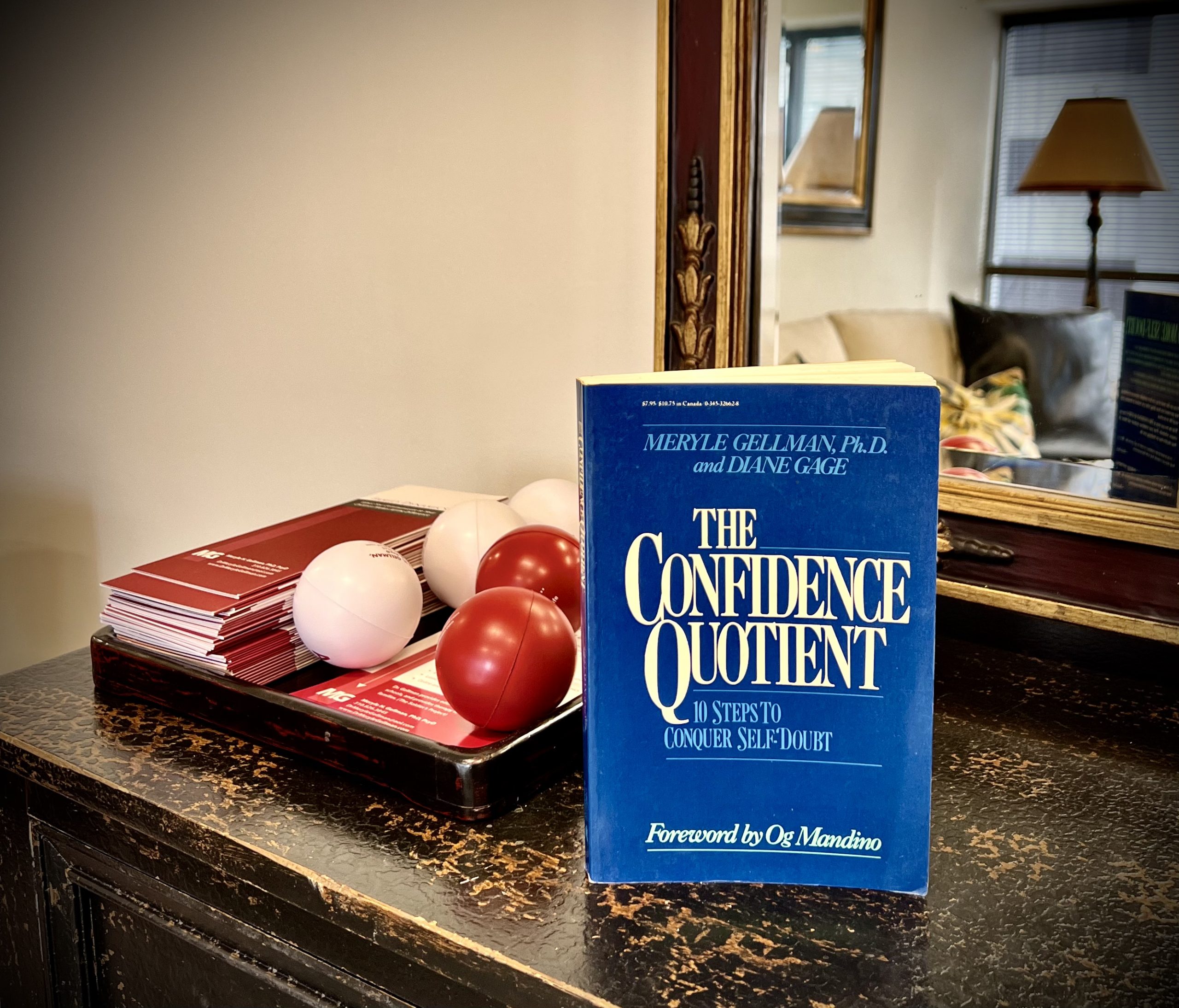The Confidence Quotient
Dr. Gellman’s book focuses on the characteristics and symptoms of self-doubt that all of us can recognize.
No one is immune to seizures of doubting his or her own ability and potential. Self-doubt can threaten interpersonal relationships, destroy marriages, hinder children’s developmental potential, suppress creative expression or even lead to alcoholism, eating disorders and drug abuse. The following is a 10-step plan to begin a process of understanding your own self-doubt and how to effectively put it in perspective:

STEP 1 – IDENTIFY YOUR SELF DOUBT
What has been bothering you? Describe your self-doubt.
STEP 2 – THINK BACK TO WHEN YOUR DOUBTS BEGAN
Determine when your doubt was planted. Recreate an early experience of self-doubt.
STEP 3 – PICTURE YOUR DOUBTING
Create a mental image for your “doubter” and give it a name.
STEP 4 – THANK YOUR DOUBTER
Your doubter has helped you. Describe how.
STEP 5 – DO YOU REALLY WANT TO CHANGE
You must be ready to have your doubter play a less significant part in your life or your doubter may find excuses for you not to change.
STEP 6 – PICTURE YOUR CREATIVE SIDE
Develop an image for your “reinforcer” and give it a name.
STEP 7 – CHANGE NEGATIVE MESSAGES TO POSITIVE ONES
Think of two or three “gifts” or positive messages that your reinforcer can give you when doubt begins to surface.
STEP 8 – LET YOUR REINFORCER EDIT THE PAST
Determine how your reinforcer could have handled situations in the past when you were troubled by self-doubt, how it could have worked with—not against—your doubter.
STEP 9 – USE YOUR CREATIVE STRATEGY TO CONQUER YOUR DOUBT
Let your reinforcer work on your present doubts.
STEP 10 – CREATE THE FUTURE YOU WANT
Put your reinforcer to work whenever your doubter begins to overshadow you. Use that creative energy to develop new alternatives and experiences. You have the resources to create the life you want!

